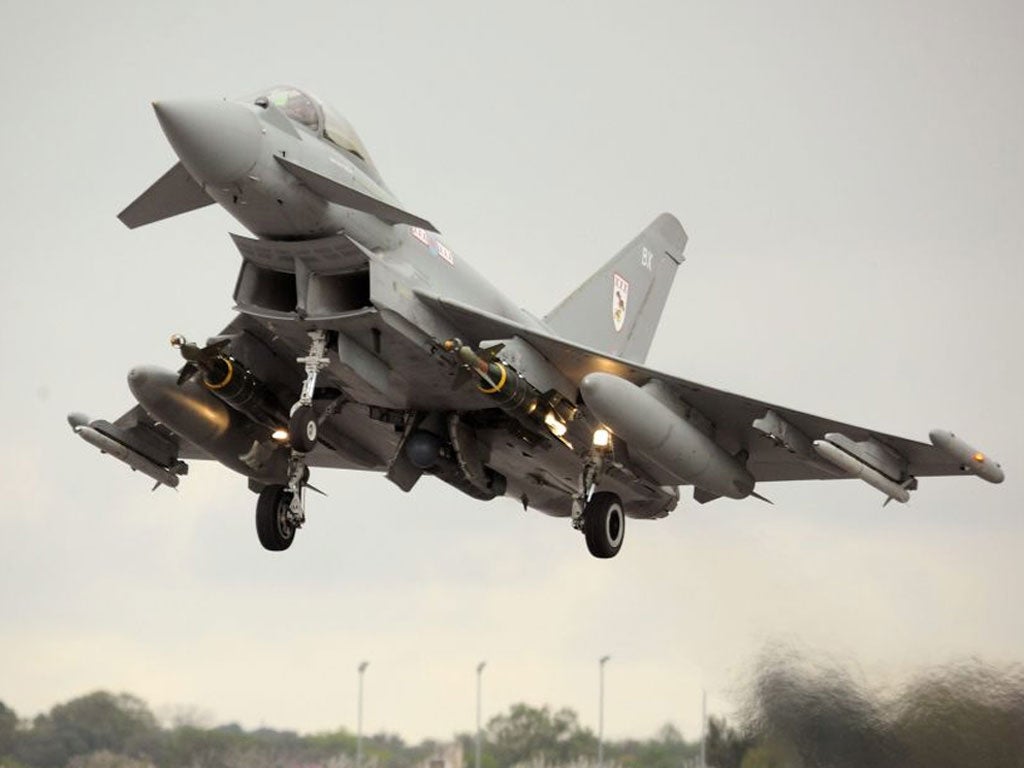Syria crisis: British jets head for Cyprus as US and Russia send ships to region
In Syria, troops are moved to built-up areas and weapons to alternative locations

The UK has sent six RAF Typhoons to Cyprus as a “defensive counter” in case Basher al-Assad decides to fire missiles at the sovereign base on the island, the Government announced today. The warplanes, based at RAF Coningsby in Lincolnshire, would be armed with Amraams (advanced medium air-to-air missiles) Asraams (advanced short-range air-to-air missiles) and a Mauser cannon.
A MoD spokesman said: “We can confirm that as part of ongoing contingency planning, six RAF Typhoon interceptor fast jets are deploying this morning to Akrotiri in Cyprus. This is a prudent and precautionary measure to ensure the protection of UK interests and the defence of our sovereign base areas at a time of heightened tension in the wider region.”
Although the move was a routine precaution, it also brought memories of the Blair government’s 2003 dodgy dossier, which provided details of how Saddam Hussein was able to launch missiles with chemical warheads within 45 minutes at Cyprus.
After various inquiries it was widely accepted the claim was false. There were various accounts of the origins of the information; one was that it came from a Baghdadi taxi driver who had two Iraqi generals in the back of his cab, and had overheard their conversation.
As the Typhoons were being deployed to Cyprus, the Russian news agency, Interfax, reported that Moscow is sending two warships to the east Mediterranean. Russian officials denied this meant it was beefing up its naval presence in the region. Interfax quoted a source in the armed forces’ general staff as saying Russia, Syria’s most powerful ally, was deploying a missile cruiser from the Black Sea Fleet and a large anti-submarine ship from the Northern Fleet in the “coming days”.
At the time, the USS Stout, a guided missile destroyer from the US naval fleet, was deployed to the eastern Mediterranean, according to US officials. It is now the fifth destroyer in the area.
While the House of Commons embarked on the slow process of deciding whether the UK joins projected air strikes, the Syrian regime evacuated personnel from key command and control centres, putting troops in built-up areas and docking naval vessels next to merchantmen in ports. There were also claims, unconfirmed, by the opposition that some chemical stock had been removed from sites.
Army units based around Damascus commandeered a number of trucks to transport weaponry to alternative locations, although movement was restricted by heavy fighting near major highways.
Among the complexes reported to have been partially evacuated are the general staff command building on Umayyad Square and the nearby air force command and security compounds. The former had been operating with reduced staffing since it was targeted in a rebel bomb attack in 2012.
Activists in east Damascus claimed barracks and housing compounds for the Republican Guards and Fourth Division near the suburbs of Somariya and Mouadamiya had been evacuated and troops and their families had gone into the city.
Residents living in the foothills of Qasioun reported that the artillery of the 105th battalion of the Republican Guards, an elite unit, had fallen silent.
Join our commenting forum
Join thought-provoking conversations, follow other Independent readers and see their replies
Comments